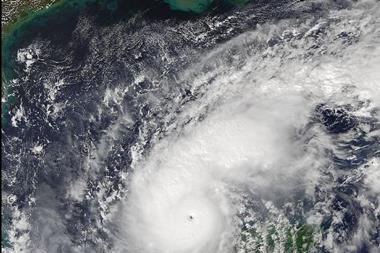NDBI is growing in frequency and severity, threatening businesses’ hard-earned revenue streams. Collaboration, backed by genuine expertise, is the best way to protect against the risk, writes Bruno Mostermans
Driven by globalisation, environmental, weather and climate change, along with technological advancements and changing business models, the risk landscape in the 21st century is fast-evolving, becoming evermore complex and interconnected. This, in turn, has transformed the risk profile for many risk managers who today are managing a portfolio of risks not seen before in the past.
Underpinning these risk challenges is the rise in non-damage business interruption (NDBI), which is threatening the hard-earned revenue streams and profit and loss ratios of many businesses, globally.
High-profile natural disasters of the past decade are prime examples of the severity of and growing risk of NDBI. From the Thai floods and Japanese earthquake and tsunami of 2011 (which famously disrupted global supply chains); to the more recent 2017 hurricanes (which affected the business continuity of several companies across the globe), one of the greatest lessons learnt was that businesses based thousands of miles outside of the epicentre – who suffered no physical damage from the nat cat events – still suffered dearly: they lost significant amounts in revenue.
NDBI is not limited to natural disasters, however. Let me draw on two more examples to illustrate the sheer scope of NDBI risks. One is related to fluctuations in weather conditions and the other draws on disruptions in construction.
Large earthquake affected the footfall of customers arriving to our client’s retail store. As a result, they lost targeted revenue from a risk that was out of their control. For another client, a rail company, severe maintenance problems were identified as a possible cause for shutdown of the rail line, preventing it from servicing its passengers. The result? Major loss in revenue. In both these cases, no physical damage occurred. But here’s another, where a client sustained physical damage, but the loss outcome was somewhat surprising: a chemical manufacturing company suffered major physical damage to its premises. The loss was huge but manageable. However, it later emerged that the NDBI, created a large loss in revenue for third parties far exceeded in costs related to the initial physical damage.
Indeed, risk managers are growing more aware and concerned about NDBI and are having active conversations with insurers about how best to protect against the threats. It is important to acknowledge that every company is unique, with individual risk profiles that differ from their counterparts’. Off-the-shelf insurance does not work. Risk solutions must be bespoke and tailored to the company’s individual risks. This is why Swiss Re Corporate Solutions takes a partnership approach and invests time and effort to understand the ins and outs of our clients’ businesses: we want to get to the bottom of the risk managers’ and their stakeholders’ concerns. We want to understand the risks that they have identified, where the exposures might be, and their loss history – all before we model the risks and create the right, bespoke solutions.
Let me take an industry-specific example to demonstrate the scope of our partnership approach. Construction and renewable energy projects have grown in complexity. Projects involve highly advanced technologies – onshore and offshore wind farms, large hydro power plants as well as tidal turbine projects. Each one involves a long line of stakeholders from project owners, contractors and sub-contractors, lenders and investment funds. Risk managers here are the conduits connecting all these stakeholders, working with each one to identify and minimise the risks. But risk managers also need a partner, one who will support them to carry out these huge responsibilities.
For complex risks, such as those connected to construction and renewable projects, we build global teams around our risk manager clients, compromising risk engineers, professionals from our centre of competences, industry experts from our global network across the world, claims handlers and underwriters. We are able to “all in one” solutions comprising marine cargo, construction/erection all risks, inherent defect as well as operation policies (property & casualty). When needed, surety bonds may also be offered. This enables us to take a global approach to complex and fast-evolving risks, building innovative risk solutions that cover all exposures.
Bruno Mostermans, Head France, Swiss Re Corporate Solutions
This article was supported by:





















No comments yet